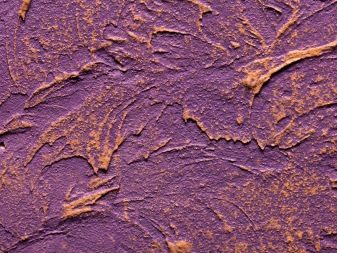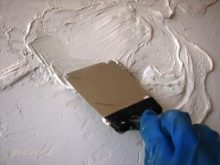Artistic plaster for walls: properties and application features

There are several alternatives to traditional wall designs. One of them is art plaster. Thanks to her, you can create a unique coating.

Peculiarities
For the first time, a special composition for covering walls with artistic plaster was made in Ancient Egypt, and was used to decorate the tombs of the pharaohs. The composition of the artistic plaster consisted of chalk and glue.
This type of coating carried not only a decorative function, but also well hid rough seams and uneven walls.
The use of artistic plaster as a separate art form consists in realizing volumetric forms on the walls. The texture of the material is a dense flexible structure that creates the illusion of multiple effects. Thanks to plaster, geometric patterns, historical motifs and abstract images are created.


A real artist will be able to create a beautiful and original piece using decorative plaster. The drawing can be replaced with a fresco, namely, apply wet material. This in itself is a finished work, which covers a specially prepared base.
Painting of the Venetian style is presented in a favorable light. Visually, it is comparable to a marble wall, and looks like a stylish image of the times of deep antiquity. Decorative art plaster has an original style and will perfectly decorate any room.

Properties
The properties of this decorative material are amazing. It is this kind of matter that attracts both from an aesthetic point of view and from the side of convenience in terms of application:
- During cleaning, you do not have to worry about the quality of the plaster. Due to the moisture-repellent structure, it is allowed to use cleaning agents.
- Another advantage is UV resistance. The color appearance of the material does not lose its saturation.
- The ability to dream up, namely, create stunning textured wall art.
- High frost resistance prevents problems during the cold season.
- Flexibility, strength and elasticity help the artistic plaster to remain on surfaces for a long time.
- The environmental friendliness of the material makes it absolutely harmless to the outside world.


Views
Venetian plaster creates an imitation of marble. The glossy appearance works well with materials such as mother of pearl, gold and silver. The application technology includes the installation of 3-12 layers, each of which should be dried before applying the next one.
- Textured plaster. Relief distinguishes it over the entire surface or in some part. When one layer dries, others are applied. The relief drawing must be formed by a specialist. Moreover, the amount of options is limitless and depends on the specialist.


- Structural decorative plaster made with similar large inserts. The bark beetle is one of the most common types of such plaster. It is often used in the design of facades and warehouse rooms. Artistic plaster is applied using a specially prepared trowel. The master must level the surface according to the thickness of the inclusions.


- Another type of artistic plaster is flocks. The mixture contains various off-spherical colored particles that are dyed at the manufacturing level.Flocks need to be applied in a fairly original way. Initially, an adhesive is applied to the wall, and then flocks are "thrown". On top of this, a protective material is laid on the surface.



The basics of using decorative plaster
You can apply artistic plaster yourself. The main thing is to make sure that the sequence of all stages of finishing is followed.
To achieve your goals, you will have to stock up on the following tools:
- plumb line and level;
- grater;
- spatulas;
- rule and trowel;
- specialized tool for applying relief.

The work includes several stages
- You need to decide on the drawing and prepare all the tools that will be needed for use. During work, there should always be a relief sample at hand in order to accurately repeat all the contours.
- We begin to prepare the surface. It is imperative to clean the walls from old material, level them on a rough draft and prime them.
- The first layer of plaster will lie flat on the dried wall. This will be the basis for applying the finishing coat. It is necessary to thoroughly dry the initially applied material and prime the surface again.



- When the soil is completely dry, the final layer is applied. With its help, the relief will be formed. In many applications, one plaster part is poured into a homogeneous mass, and textured recesses are left from the inside. This technology will allow a simple relief to look original and more interesting.
- Coloring agent. The desired dyeing method is selected in accordance with the material. The paint should accentuate the luxury of the decorative finish.



Decorating the walls with artistic plaster requires strict adherence to the installation rules. Making independent innovations in the technology of embossed manufacturing will have a bad effect on the result. It will take not a single day to create a high-quality decorative art covering. This is not a time to rush. The main thing is to thoroughly dry each layer.



For information on how to decorate the wall yourself with decorative plaster, see the video below.













The comment was sent successfully.